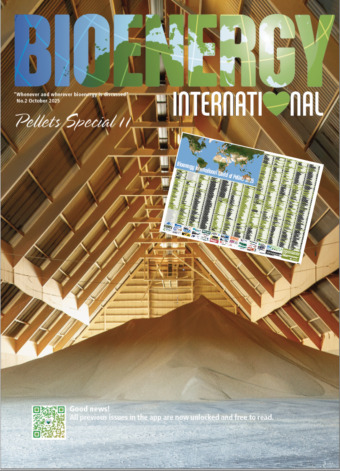In Sweden, St1 Biokraft, one of the leading biogas players in the Nordics, has inaugurated its new flagship liquefied biomethane (bioLNG) production plant in Mönsterås, Kalmar County. The plant is the company's thirteenth facility and has an annual production capacity of approximately 138 GWh of bioLNG, making it one of the largest in the country.
A joint venture between Nordic energy major St1, Norway-headed private equity firm HitecVision AS, and compatriot Aneo AS, a renewable energy company jointly owned by HitecVision New Energy Fund AS and TrønderEnergi AS, St1 Biokraft currently owns and operates twelve production and upgrading facilities in Sweden, Norway, and South Korea, with its own production of approximately 550 GWh per annum of biomethane, aka renewable natural gas (RNG).
St1 Biokraft Mönsterås is the company’s 13th production unit and is a large-scale biogas plant that, at full capacity, will produce approximately 138 GWh per annum of liquefied biomethane (bioLNG) equivalent to approximately 13 million liters of diesel.
The groundbreaking for the construction took place in February 2023 under Scandinavian Biogas, which was acquired by St1 Biokraft in 2024.
The plant was completed in the spring of 2025, and the first delivery of bioLNG occurred in August 2025. Production is expected to ramp up to reach full capacity around the end of 2025.
High livestock density
Mönsterås is one of Sweden’s most livestock-dense municipalities, and with its strong agriculture, the area offers good access to feedstock.
The plant receives approximately 260,000 tonnes of livestock manure annually as input for production.
I am very pleased that we have now inaugurated the plant in Mönsterås, and I want to express my gratitude to all employees, suppliers, partners, and owners who made this possible. The plant is a very important milestone in achieving our long-term goal of 3 TWh of our own biomethane production by 2030 and our ambition to become the leading biogas player in the Nordics, said Miika Johansson, CEO, St1 Biokraft.
According to the company, bioLNG reduces the carbon footprint by up to 200 percent compared to a fossil equivalent and plays a crucial role in reducing the climate impact of heavy transport and shipping.
Additionally, the plant produces biofertilizer in five fractions, which, when returned to agriculture, reduces the need for fossil fertilizers and balances levels of phosphorus and nitrogen.
Biogas is an excellent example of a circular economy that provides solutions to several of our major societal challenges. Here in Mönsterås, we produce biogas from local raw materials, which strengthens Sweden’s energy self-sufficiency and reduces dependence on imported fossil fuels. At the same time, it offers a competitive and low-emission alternative for heavy traffic, shipping, and industry. Additionally, we produce high-quality, locally produced biofertilizer that improves soil quality for farmers in the region. The plant in Mönsterås is part of a larger value chain and contributes positively in many ways. This is something we can rightfully be proud of, Miika Johansson added.
Strategic investment with unique local anchoring
The St1 Biokraft Mönsterås flagship plant was developed in a unique partnership with farmers from Mönsterås and surrounding areas who are co-owners of the plant through Mönsterås Biogas AB.
St1 Biokraft is investing heavily in the expansion of new plants in the Nordics. Currently, two plants are being built in Finland.
St1 Biokraft has previously communicated investments equivalent to SEK 11 billion (≈ EUR 1 billion) in new bioLNG production and distribution facilities to achieve the company’s long-term goals.
The plant in Mönsterås has involved an investment of approximately SEK 900 million (≈ EUR 82.2 million), of which SEK 154 million (≈ EUR 14 million) was a grant through Klimatklivet (“Climate Step”), the Swedish Environmental Protection Agency’s investment program for green investments.



